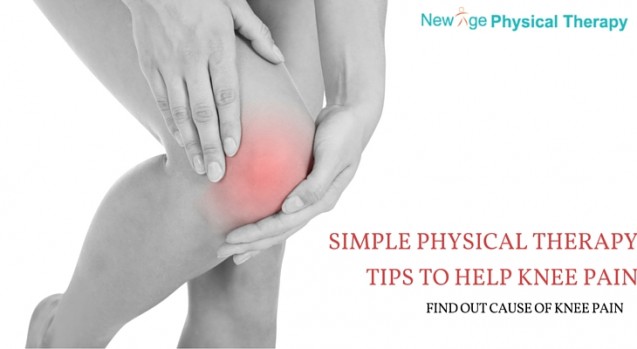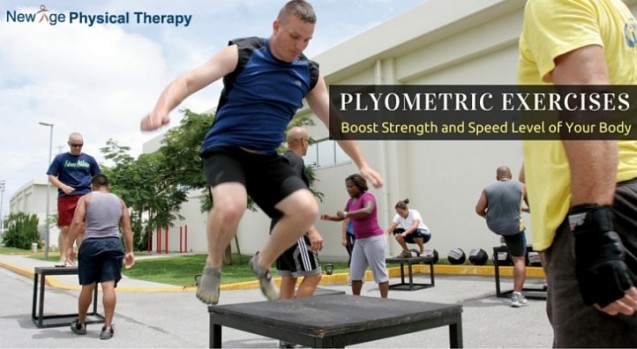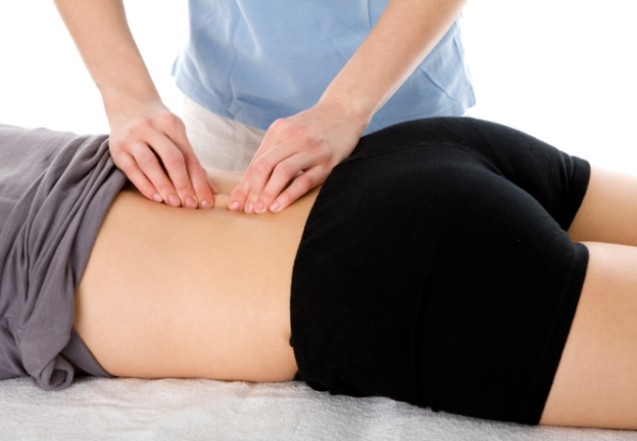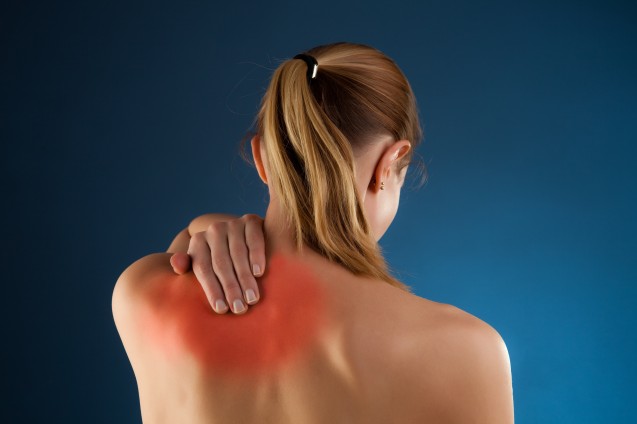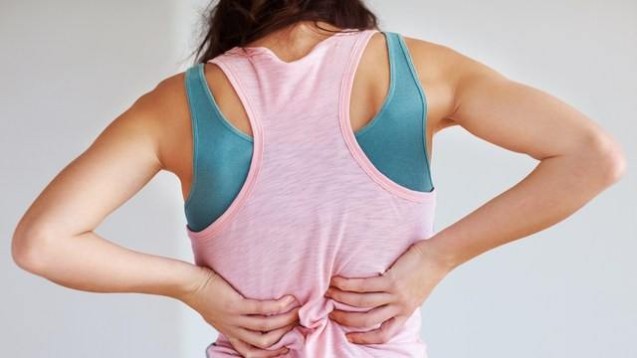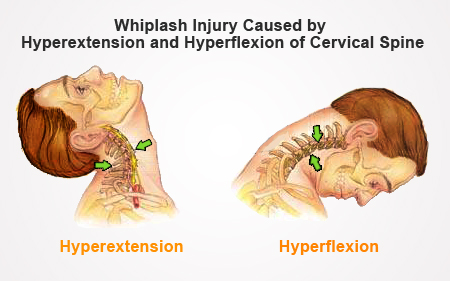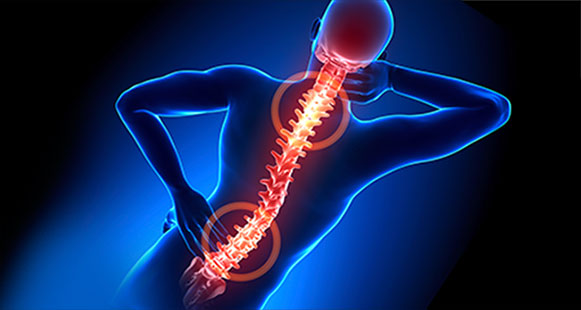As we are know that physical therapy is more reliable and perfect to reduce some inner side of pain in body. But we don’t know that physical therapy cannot frequently used as an alternative to reduce pain, opioids for musculoskeletal pain managing.
Physical therapy applied to do many of musculo skeletal types of treatment. A benefit of physical therapy in your life is much that we know. Also it can beneficial to us to avoid other side effects or bad side effect occurs due to medicines and other pharma chemicals. Physical therapy performs natural treatment in our life.
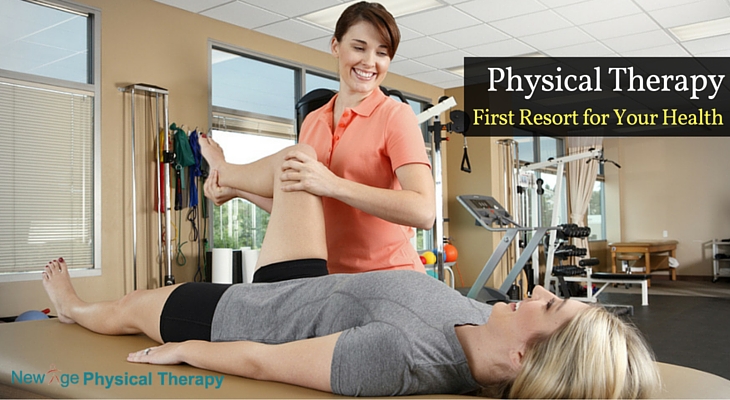
There is lots of natural therapy existed in the world such like yoga, massage and acupuncture to maintain body, avoid side effects and being healthy in life. Also this natural therapy gives lifetime good result other than drug or medicines, and for conservative drugless therapy. Many of peoples which are afraid to go for seeing doctor about that problems and taking insurance. They should try physical therapy once in life.
Right now some therapy centre allows free some day’s therapy at their centre to evaluation of therapist work for his/her treatment. No need to go for doctors to take permission either he/she goes for physical therapy center or not. New Age Physical Therapy Centre in New York is one of the good destination where you can go to take treatment related to your pain. The center is licensed and can fulfil his/her complete requirement.
There are lots of benefits of physical therapy but it only works well if you apply in your life properly; from them meniscus tear, lower back pain, tendinitis can get much better recovery with physical therapy. It’s not only reason to reduce pain only but it can also much better to avoid post surgical complications, unnecessary surgery, and operations.
It is the thing that patients should be also proud themselves of reducing opioids dependency while PT centers are providing it with new form of pain reducing treatment. It will be much helpful to help national opioid epidemic.
Patients should be incredibly proud of reducing the dependence on opioids while providing themselves with new forms of pain management, covered by insurance. Doing this can help national opioid epidemic.
More
If you are suffering from your knee pain and couldn’t got recover even by visiting may of doctors and experts and its paining continue when you are walking, waling up and down through steps at your home then you should do day to day exercises related to aches.
Physical therapy is the core thing that can help you to prevent pain more wisely then medicines from doctors. You can get back to your normal if you have even more hard pain in your knee.
If you are not able to go for physical therapy centre then you can try some basic exercises at your home also. These are the simple moves that will change some your routine lifestyle and you should try at home and check whether it is beneficial for your knee or not.
1. STRENGTHEN YOUR QAUDRICEPS, GLUTEAL MUSCLES
Weak hips, thigh muscles and poor motor control these are the nasty thing that can lead you to add forces existed on your joint of knee. Weak quadriceps really effects how your body weight bears thru your joint. Weak gluteal also affects your pelvic related pain and due to this issue it may happen overloading on knee joint.
So you can find exercises to strengthen quadriceps and gluteal muscles. Focus more on quadriceps muscles first start with simple knee presses and holding and straight leg raises. Progress slowly.
2. MAKE CORRECT LIMITATION OF MOBILITY
Also patient has to check their mobility especially on their lower extremity. Lack of flexibility in hamstrings, quadriceps and calf muscles can lead to improper loading on joint which in turn lead to pain ache across your knee.
Stretching those muscles really prevents injury especially in athletes. Without the necessary mobility, your knees are going to take the brunt of the force. So add some stretching exercises to your routine exercises.
3. DO TRAIN OF YOUR CORE
When we are talking about knee pain, weak abdominal muscles can also play a important role. Weak core can make once posture poor which in turn lead to improper gait. Improper gait can lead to pain across knee.
In majority issue we never worry for 6-pack, we are conversing about your inner essence stabilizers which is across abdominals. Processing to do this stability and endurance can help you to improve posture, improve gait pattern which may help to reduce knee pain.
4. YOU SHOULD STABLE YOUR WEIGHT
Heavy weight of body can also occur stress placed on your knees. Expert says that anyone who has high weight problems can be at high risk for knee osteoarthritis. If you need to relax from this knee issue happened from heavy weight then you should do some little diet in your daily food and also required to change some daily activities of working. It will help you decrease your heavy weight and lead you to reduce your knee pain.
Regular cardio and resistance exercises are good way to maintain your weight and build strong lean muscles. But if you are suffering from much knee pain then you should make limit or stop some physical working activities, daily work etc. You can do exercise in pool that can help you to prevent high
By exercising in a pool you can reduce the effects of significance on the body, so that it can beneficial for you to reduce pain.
5. LOOK DOWN AT YOUR FEET
Alignment of foot should be properly because it may happen that improper foot structure also plays role to increase knee pain. A person who wears high heels shoes has shown high compressive forces on knee.
People who wearing worn out shoe or has over- pronated foot can also have increase weight on to their knee. So take proper foot care, changing footwear regularly, proper ankle mobility can help you to reduce knee pain.
After understanding your knee problem you can try some exercises at home and follow some simple steps of New Age Physical Therapy, NY if you still have trouble please call your physical therapist.
You may like to read more;
More
Plyometric exercises are great form of exercise to increase speed and power. These are different kind of exercises then you do regular strengthening exercises. This Plyometrics exercises can improve your reactive energies by consuming the Strength-Shortening Cycle (Generally It’s known as SSC) in order to generate maximal output of power.
It is the only exercises which were firstly developed by Soviets during the timing of cold war occurred in 1947 time. Do you know why they did it in cold war because they want to increase their strength and speed? These are the main reason that they had developed this plyometric exercises. This kind of exercises was used to well train their athletes. Due to plyometric exercises generated speed and strength and its good combination they lead to powerful athletes.
We can divide this plyometrics exercise into three phases, which are as follows.
1. Rapid Muscle:
The first and foremost phase is known as a rapid muscle. This rapid muscle lengthening movement also called the eccentric phase.
2. Amortization Phase:
The second one comes a short resting period called the amortization phase. This phase is most important phase for this exercise.
3. Concentric Phase:
Finally the third and most important phase is the athlete engages in an explosive muscle shortening technique that is well known as concentric phase.
Doing warm up is most important factor and prior for plyometrics exercises. Do you know how to do warm up? Let’s do it with this short information. Warm up can be done in form of light cardio, dynamic or static stretching. After doing this warm process athlete feels much relaxed and should cool down after each session.
Some important factors should consider by all athlete who wants to do this. From them first and important is all athletes should go under orthopaedic screening before these exercises to make sure it’s suitable for them or not. Every athlete who wants to go for it might have to go thru klatt test before going thru plyometrics.
Before starting this exercises keep in mind that every athletes should were comfortable clothing and good sneakers. It is the fact that plyometrics should not be done on concrete or very hard surfaces.
Let’s know about some important examples of plyometrics exercises here;
- Box Jumps
- Tuck Jumps
- Lateral Jumps
- Split Jump
- Power Skipping
- Bounding
- Plyometric Push Up
There are many athlete wants to do plyometric exercises and many of doing also. Plyometric exercises have been used by many of athletes successfully as a primary method of training to enhance the power and speed. New Age Physical Therapy Center Flushing, NY is place to get perfect plyometric exercise that can boost your energy and speed level. In order to realise and to result of the potential benefits of plyometrics training the process of stretch shortening might be invocated. Also it needs perfect and careful attention to the technique used during the drill or exercise.
More
Spinal decompression may help treat low back pain, but this popular treatment isn’t a sure thing. Advertising for spinal decompression targets people with degenerative disc disease, bulging discs, herniated discs, or spinal stenosis.
What is spinal decompression?
Spinal decompression is a form of mechanical spinal traction, which refers to the separation of the bones, joints, and discs of the back.
It is theorized that this separation relieves pressure on the nerves in the back and helps decrease pain, and thus, improve function.
Many spinal decompression systems are operated by the use of a computer, allowing the health care provider to adjust the amount of traction force, the angle of traction provided, or the amount of time the traction force is applied. Common trade names of spinal decompression devices are the VAX-D System, the Spinal Aid System, and the DRX-9000 System, among others.
Some spinal decompression units require that you lie on your stomach while treatment is rendered; others have you lie on your back.
Are there risks associated with spinal decompression?
A review of the published data for the use of spinal decompression reveals very little risk associated with treatment. One study reported on a patient who developed severe pain while on the unit. A follow-up MRI of the spine revealed that this patient’s lumbar herniated disc had increased in size.
The patient subsequently had a lumbar surgery and it was reported that the patient recovered fully. Other studies report some increase in pain for a few participants.
Does spinal decompression help low back pain?
The main theory behind spinal decompression is that providing traction to the compressed structures in the spine helps relieve pressure and pain.
So traction must help low back pain, right? Well…
A study published in the 2001 issue of Physical Therapy Journal (PTJ) evaluated various forms of treatment for acute (symptoms for less than 4 weeks), sub-acute (4-12 weeks) and chronic (more than 12 weeks) low back pain. The published evidence available for the use of traction for low back pain received a grade of “C” (no benefit demonstrated).
Claims have also been made that spinal decompression creates negative pressure in the discs of the spine, which helps to pull bulging discs back into place. A published study reporting on three patients concludes that spinal decompression did lower the pressure in the discs while using decompression. This is a small study, however, and no cause and effect conclusion about spinal decompression and low back pain can be made.
However, more studies have been conducted since the ones mentioned above. More observational studies using larger trial groups are finding the spinal decompression may help with some of the symptoms of low back pain, specifically the radicular leg pain.
And, there are still smaller studies finding positive outcomes.
Simply put, there is limited scientific evidence that spinal decompression can help your low back pain. Does that mean that it does not work? Not entirely. It just means that the current level of research is not sufficient to draw positive cause/effect conclusions for the use of spinal decompression. There may be other more affordable options for you to consider when faced with treating your low back pain.
What does help low back pain?
While many treatments are available for your low back pain, the scientific data indicates that maintaining normal activity is a good treatment (grade of “A” — benefit demonstrated — in the 2001 PTJ review) for acute low back pain. Exercises for your low back also received a grade of “A” for sub-acute and chronic low back pain.
The great thing about exercise is that it is a low-cost, easily implemented treatment. Your physical therapist can teach you how to improve your posture and implement the right exercise program for your specific condition to treat your low back pain.
More
If you have pain in your shoulder and difficulty lifting your arm overhead or has trouble rotating arm, you may have frozen shoulder. Frozen shoulder also known as adhesive capitalistic, is a painful condition that seems to start gradually and slowly limit your ability to lift your shoulder and arm normally. There are many reason you can have frozen shoulder. Main reason is not moving shoulder normally after any shoulder injury can lead to adhesion in shoulder capsule which in turn lead to frozen shoulder.
Physical therapist can really help you with frozen shoulder. Physical therapy for frozen shoulder normally involves therapeutic modalities (to control pain and relax shoulder), Range of motion (ROM) exercises to improve shoulder mobility, Passive range of motion, shoulder mobilization and shoulder/scapular strengthening exercises. Home exercise program is very important part of physical therapy.
Patient with frozen shoulder might be given hot packs, electrical stimulation or ultrasound to relieve pain temporary so patient can exercise better.
Skilled manual therapy is very important in frozen shoulder patients. That may be passive range of motion, joint mobilization. This has to be done by physical therapist to achieve more mobility in shoulder.
ROM exercises:
Patient should be given some range of motion exercises to do and some stretches. ROM exercises and stretches could be painful at times but as long as that pain is temporary patient should not be worried about.
Patient can be started initially with isometric exercises along with other strengthening exercises. Strengthening exercises includes rotatory cuff strengthening, shoulder muscle strengthening and scapular strengthening. Therapist may use free weights, the bands or cable machines to strengthen shoulder and scapular area.
Frozen shoulder can be a painful condition that prevents you from moving your arm normally. If you have a frozen shoulder, it is important to use specific exercises and motions to help get your arm and shoulder moving again. By consulting your physical therapist getting to work with step-by-step program, you may be able to quickly and safely resolve your frozen shoulder and get back to your normal movement and functional ability.
Read More :
More
Anybody who gets back pain and sciatica kind of pain will have common questions what should i do, what i should not? Who should I see and can I fix pain by myself? Should I do flexibility exercises or strengthening exercise?
In most cases patient with severe sciatica kind of pain end up in first med or emergency room. They might do x-ray and most likely give them pain killers and would advise patient to see either orthopedic or physical therapist depends on their condition.
In any case, you might end up with physical therapy. Physical therapist role is to centralize your pain, help you to maintain correct posture and do back stabilization exercises. Physical therapist may also use pain modalities to control your pain.
Physical therapists who is trained in McKenzie methods are specialist while treating sciatica kind of pain. Therapist should be able to do thorough assessment of your problem and see whether you are right candidate for McKenzie technique.
With McKenzie technique therapist will try to centralize radicular pain and then help you to reduce or eliminate pain from back completely. Mackenzie exercises are done in progression. Once patient is comfortable with first step of exercise then move to next.
How Do I Know If the Exercise is the Correct One for Me?
If you are experiencing pain on one side of your back or leg, then try the first exercise and monitor symptoms as you exercise. Watch for centralization, which is a decrease in leg or thigh pain and an increase in low back pain. Centralization that occurs while you are performing an exercise is a good sign and indicates that the particular exercise is the correct one for you to be doing.
If your symptoms worsen, fail to centralize, or only centralize partially, move on to the next exercise in the list. Attempt the exercise, and monitor any changes in your symptoms. Remember pain that moves closer to your spine is a good sign. Any sign of more radicular pain or worsening symptoms patient should stop those exercises immediately and speak to their physical therapist.
Also before starting any exercise for your back in severe cases, it is a good idea to check in with your doctor to be sure that exercise is safe for you to do.
- Prone Lying, Prone Props, and Press Ups
In the case of sudden onset of acute low back pain, you should try the emergency back pain exercises first. Lie on your stomach for a few minutes, if that is comfortable then prop onto your elbows for a minute or two. Monitor your symptoms for centralization. If it centralize continue and you can slowly go on elbows.
If symptoms are improving then and then only, try a few press ups. Try to keep your hips and back relaxed as you use your arms to press your upper body up. Try to press up as far as possible to restore the normal forward curve in your low back. Perform 10 repetitions and monitor your symptoms.
If your pain does not fully centralize with the press up exercise, you may need to see doctor or physical therapist.
Above mentioned exercises first step in McKenzie exercises. If that has not resolved your problem you need attention for your problem.
Read More :
More
The most common injury from an auto accident (over 1,000,000 cases per year) is “whiplash” injury. It happens from the sudden force. Since there is no outside trauma or injury by the time pain gets worst it takes about 24 hours
- Why Physical Therapy for Auto Injury Treatment?
Initial medical treatment for motor vehicle accident for neck pain is rest, protection, ice and seek medical help from either primary care physician, orthopedic or neurologist. They might start patient with pain killers, anti-inflammatory and send them to physical therapy to re-gain range of motion and strength. Regardless of the severity of the injury, you will benefit from a physical therapy program.
- When Do I Start Treatment for an Auto Accident Injury?
It is highly recommended to begin physical therapy as soon as your physician prescribes or within 1 week. Treatment will be initiated to control pain and diminish swelling. Small movements are introduced to begin your tissue’s repair process. Or Isometrics to prevent loss of muscle strength.
Eventually physical therapist will work on your posture and restoring normal range of motion and strength.
- Physical Therapy for Auto Accident & Whiplash Injuries
Fortunately for people in bayside queen’s area, New Age Physical Therapy has experience physical therapist who has more than 15 years of experience in orthopedic physical therapy.
Patient will be assigned to one physical therapist and will follow up with that physical therapist who can manage and alter plan as necessary to resolve pain and symptoms as soon as possible. Physical therapy may include hot packs, electrical stimulation, and isometric exercises, range of motion exercises and later flexibility and strengthening exercises. Most of physical therapy is done hands on at new age physical therapy with simple exercises which patient can carry out at home on regular basis and which helps them recover faster.
If you are suffering from whiplash injury and if you have any question or concern please feel free to call our office, our experienced physical therapist will help with any question and concern you may have.
Popular Post :
More
People who suffer from lower back pain are encouraged to help themselves with exercises and being active and getting skilled physical therapy. Lot of times patients are not explained in detail what is causing their pain and how to manage them so they can get better faster.
As back pain is very common and most of us experience in our lifetime. Best way to avoid surgery or get better faster is to perform skilled exercises with help of physical therapist who can tailor exercises depends on type of back pain patient has.
Understanding back pain
There are several structures in the back that can cause and/or contribute to low back pain.
Although the intervertebral disc is a remarkably versatile and strong structure, essentially acting as a shock absorber during everyday activities, sometimes the disc fails when there is a sudden, unexpected force (such as a fall, lifting, or other trauma), or due to ordinary wear and tear over time. And when the disc does get injured it repair itself with fibrous tissue which can also cause pain and patient could hae recurrent back pain.
Activity is also needed to maintain the exchange of fluids in spinal structures and reduce swelling that naturally occurs in the tissues surrounding an injured disc. This swelling can further irritate nerves that are already affected by herniated disc material. It can be achieved by particular exercises and physical therapy modalities.
These patients are normally complain of radiating, numbness, heaviness kind of pain and also complains of weakness in some leg muscles at times.
- Spinal Muscles, Ligaments, and Tendons
The collective soft tissues around the spine – the muscles, ligaments and tendons – are also very important in maintaining proper spinal balance and strength. With decreased activity, the connective fibers of ligaments and tendons can begin to adhere to each other and lose resilience and may tear when sudden overload occurs. Unlike discs or connective tissue, however, when soft tissues are injured, they can quickly repair themselves.
Since muscles are in constant communication with the central nervous system, anger or anxiety can tense the muscles and cause muscle spasms. Ongoing tension inhibits normal muscle function and leads to muscle wasting and further stability problems, which in turn can lead to chronic lower back pain.
In this cases normally patient is complain of localized pain.
When nerves are cut, pinched, or otherwise irritated, the muscles that the nerves control cannot work or reduce function of muscles. For example, when a herniated or bulging disc presses on the L4-L5 nerve root, it may inhibit the nerve’s ability to make the muscles it controls in the ankle and foot work properly, causing what is known as foot drop – the ability to raise the foot or stand on one’s tiptoes.
Most of these patients are complain of radiation, numbness, burning pain along with weakness in muscles or unable to move muscle.
Above mentioned are few reasons person can have lower back pain or leg pain with or without back pain. In any case, Patient should consult orthopedic or neurologist if pain is really worst. In other circumstances patient can have consult with physical therapist and see if they can help them.
Read More :
More
The amount of people having chronic pain is increasing now a days. A recent NIH study has showed those numbers. The growing number of people experiencing pain has resulted in an unprecedented growth in prescriptions of diploids and anti-anxiety medications. And, deaths from abuse of these drugs is at an all-time high. By identifying patients at risk of opined and Benzedrine abuse more quickly, and getting them the right care, we can improve the quality of life for millions of people, and, in some cases, save lives. Lot of times going conservative and modifying life style can improve patient’s pain and quality of life.
Chronic Pain
There are many definitions of chronic pain, but one of the most widely accepted is any pain lasting longer than 12 weeks. Having pain for longer than 12 weeks is simply not normal. In contrast, acute pain, that is, pain lasting for a shorter period of time. Sub-acute pain is when pain is closer to acute but not chronic yet.
Think about the differences between the acute pain and chronic pain, you experience pain while playing soccer twisting your ankle or knee, initial pain is acute pain. Patient now sees doctor who stabilize his/her injury and give necessary prescriptions. In subacute phase patient might be referred to physical therapy to control pain, decrease swelling, and promote healing strengthening and getting back player back in sports. Now same scenario happens with somebody twisting ankle walking down street and didn’t take care of it thinking it will be better but patient still have lingering pain after three months that is chronic pain.
Certain pain starts suddenly (acutely) and get resolved with time. Unresolved pain can turn into chronic pain. Over period of time if chronic pain is not taken care of can lead to arthritic changes in that join or can lead to complete disability. That in turn led to depression other complications.
Patient who has chronic pain tend to get addicted to pain killers. The CDC reports: “Health care providers wrote 259 million prescriptions for painkillers in 2012, enough for every American adult to have a bottle of pills.”
Every year people going to emergency and dying from strong pain killers like OxyContin, Percocet and heroin are increasing and it’s alarming.
Patient should be treated more conservative with physical therapy, psychological counselling and modifying life style which can reduce opioids related deaths from overdose.
Read More :
More
From any aches, pain, joint stiffness or other musculo skeletal problem physical therapist has knack to assess and treat them. Physical therapist can really understand bio mechanics of your joints and muscles. You can always see a physical therapist for any of your needs with aches and pain.
First Step— The Assessment
The first step in physical therapy treatment is assessment. Patient has to be evaluated in detail to understand their problem and underlying causes. It is very important that they go the root of the problem to treat patient effectively.
Second Step- The treatment Plan
Although patient may come to see physical therapist for many different reason. It could be neck pain, back pain, shoulder pain, knee pain, ankle pain, therapist has to lay out a treatment plan. Most of the treatment plans may include Ice, Heat, Electrical stimulation, Ultrasound, Manual therapy, Therapeutic exercises. Manual therapy is very important part of physical therapy it could be stretching, Soft tissue manipulations, neural mobilization, and joint mobilization.
Third Step- The treatment
Ice
It helps to reduce swelling and temporary relief from pain. Ice usually applied first 48-72 hours of injury or in some cases even after if it inflammatory condition and swelling is on/off. Ice helps decreasing swelling by constricting blood vessels. Therapist will decide whether ice is good for your condition or not after the evaluation.
Heat
It helps to relieve muscular spasms, tightness and joint stiffness. Heat helps to reduce pain, spasm and stiffness by dilating blood vessels. Therapist may use heat to aid other treatment like stretching, joint mobilization.
Electrical Stimulation
There are different kind of current therapist used to treat patient’s pain. Electrical stimulation helps to relieve pain temporary. It can be used along with hot/cold packs. It blocks pain at spinal level by releasing endorphin and encephalin.
Ultrasound
It helps in promoting healing, increase metabolism and improve microcirculation in the area which is being treated. It is kind of deep heat which penetrates deeper then conventional hot packs and it is very useful modalities for localized pain in conditions like tendinitis, sprains.
Manual Therapy
Working hands on patient cannot be emphasized enough in patient’s physical therapy treatment. Any orthopedic conditions for which patient is going for physical therapy needs manual physical therapy. Manual therapy may include stretching, neural mobilization, joint mobilization, joint traction, soft tissue manipulations. Manual therapy should be part and backbone of any physical therapy treatment.
Therapeutic Exercise
It is very important in any rehabilitation that patient goes through series of exercises to reach their goal. Range of motion exercises are to restore full range. Flexibility exercise will be to keep flexibility across particular muscle. Patient will be given particular exercise to regain strength and it will be tailored to targeted muscle and it will be part of patient’s recovery.
More


